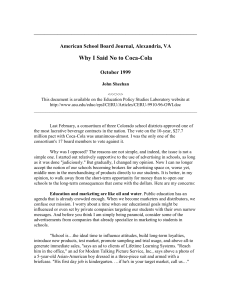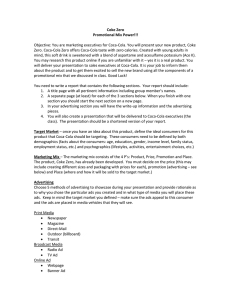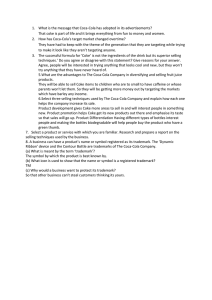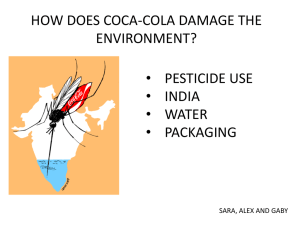Lab 12
advertisement
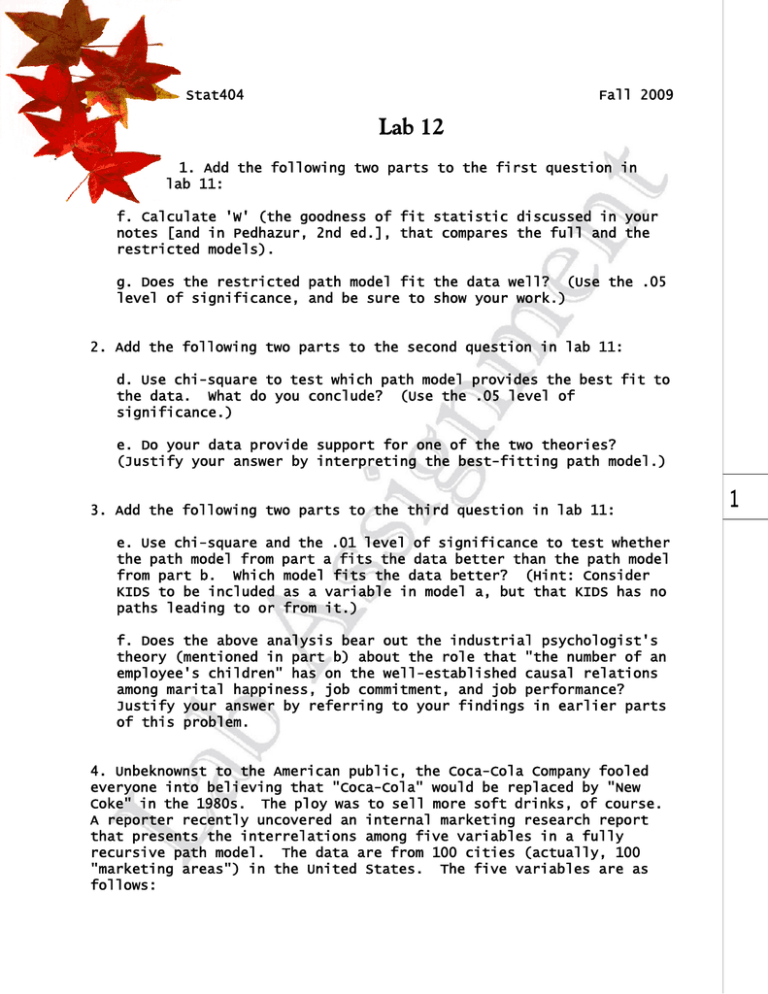
Stat404 Fall 2009 Lab 12 1. Add the following two parts to the first question in lab 11: f. Calculate 'W' (the goodness of fit statistic discussed in your notes [and in Pedhazur, 2nd ed.], that compares the full and the restricted models). g. Does the restricted path model fit the data well? (Use the .05 level of significance, and be sure to show your work.) 2. Add the following two parts to the second question in lab 11: d. Use chi-square to test which path model provides the best fit to the data. What do you conclude? (Use the .05 level of significance.) e. Do your data provide support for one of the two theories? (Justify your answer by interpreting the best-fitting path model.) 3. Add the following two parts to the third question in lab 11: e. Use chi-square and the .01 level of significance to test whether the path model from part a fits the data better than the path model from part b. Which model fits the data better? (Hint: Consider KIDS to be included as a variable in model a, but that KIDS has no paths leading to or from it.) f. Does the above analysis bear out the industrial psychologist's theory (mentioned in part b) about the role that "the number of an employee's children" has on the well-established causal relations among marital happiness, job commitment, and job performance? Justify your answer by referring to your findings in earlier parts of this problem. 4. Unbeknownst to the American public, the Coca-Cola Company fooled everyone into believing that "Coca-Cola" would be replaced by "New Coke" in the 1980s. The ploy was to sell more soft drinks, of course. A reporter recently uncovered an internal marketing research report that presents the interrelations among five variables in a fully recursive path model. The data are from 100 cities (actually, 100 "marketing areas") in the United States. The five variables are as follows: 1 CONSUMPTION1 Per capita Coca-Cola consumption prior to the announcement that "Coca-Cola" would be replaced by "New Coke" ADVERTISING1 = = Amount of television advertising dollars per capita spent in announcing that "Coca-Cola" would be replaced by "New Coke" OUTRAGE = Number of letters to the Coca-Cola company from the marketing area criticizing the company's choice to replace "Coca-Cola" with "New Coke" ADVERTISING2 = Amount of television advertising dollars per capita spent after the announcement to reassure Americans that "Coca-Cola" would NOT be replaced by "New Coke" CONSUMPTION2 = Per capita Coca-Cola consumption after the announcement reassuring Americans that "Coca-Cola" would NOT be replaced by "New Coke" The path model: 2 A partially filled-in correlation matrix among these variables: X1 X2 X3 X4 X5 CONSUMPTION1 ADVERTISING1 OUTRAGE ADVERTISING2 CONSUMPTION2 X1 1.00 .050 .335 .242 .700 X2 .050 1.00 AAAA .441 .300 X3 .335 AAAA 1.00 .538 .300 X4 .242 .441 .538 1.00 .400 X5 .700 .300 .300 .400 1.00 a. Solve for AAAA in the above correlation matrix. b. Make up a table of just those total, direct, and indirect effects on CONSUMPTION2 from this fully recursive path model. Be sure and show how any indirect effects were calculated. c. From the evidence presented in the table of effects in part b, decide whether or not the public outrage that resulted from the company's advertising strategy was transformed into profit (via Coca-Cola consumption) when the company reassured Americans that "Coca-Cola" would NOT be replaced by "New Coke." That is, would you conclude that it was profitable for Coca-Cola to outrage its customers? (Explain your answer.) d. In planning their advertising trick, Coca-Cola deliberately manipulated ADVERTISING1 so that no more advertising dollars were spent in market areas with either high or low per capita Coca-Cola consumption. That is, the low correlation between CONSUMPTION1 and ADVERTISING1 is due to the research design. (NOTE: Any effect [such as this unanalyzed effect] built into one's research design must remain estimated in any statistical model.) On the other hand, because the Coca-Cola Company's policy is to allow advertising to be directed solely by consumer demands [e.g., in letters of complaint], you have theoretical reasons for dropping two paths from the model: (i) The indirect effect of CONSUMPTION1 on ADVERTISING2 through OUTRAGE makes sense: Marketing areas with high Coca-Cola consumption are most likely to send letters of complaint to the company, which would stimulate the company to advertise that "Coca-Cola" would not be replaced by "New Coke." However, beyond this indirect effect there is no reason to posit a direct effect of CONSUMPTION1 on ADVERTISING2. (ii) Likewise due to chaotic changes in the company's post-announcement advertising policy, it is reasonable to assume no direct effect of ADVERTISING1 on ADVERTISING2. Redraw a path diagram among the variables that depicts a restricted model that excludes these two paths. Onto this path diagram enter your estimates of only those paths that have changed from the fully recursive path model. e. Use chi-square to test whether the fully recursive or the restricted path model provides the best fit to the data. Which is the best-fitting path model? (Use the .05 level of significance.) 3

